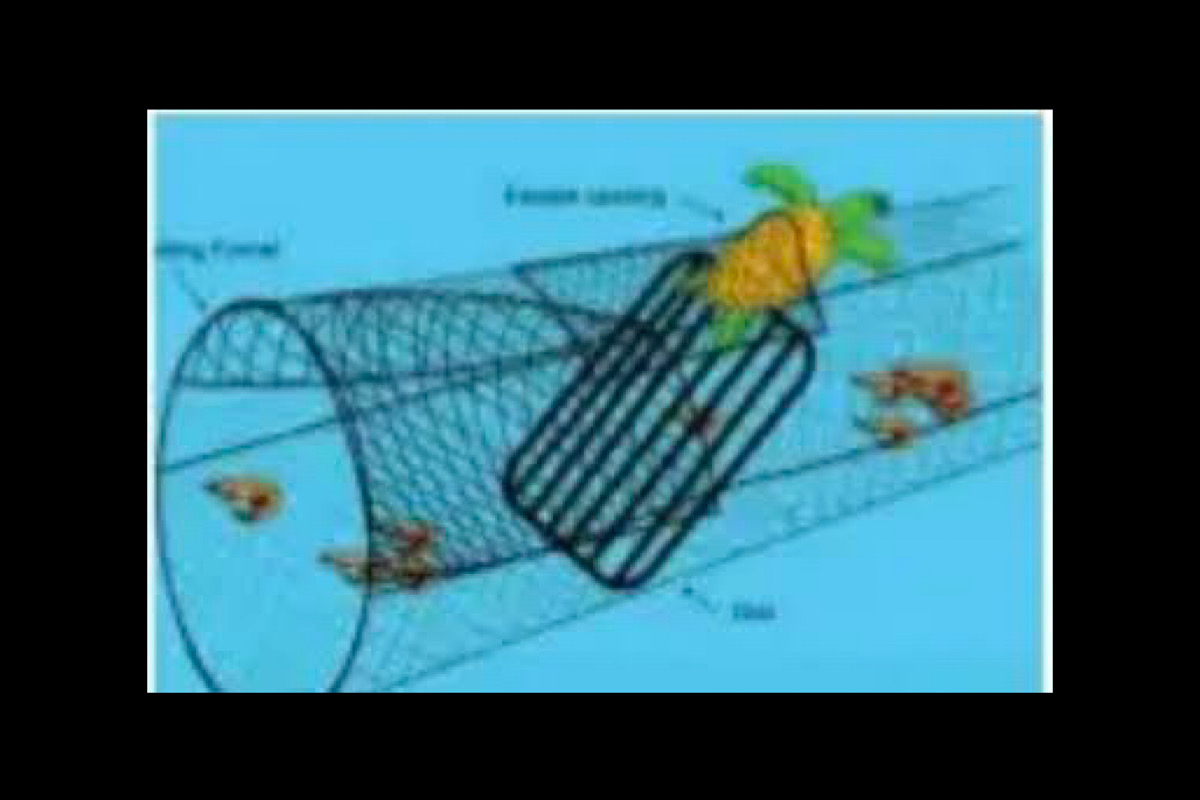Locals face problem of living in one district and voting for another
Around 3,000-odd residents face the problem of living in close proximity to Katwa town in Burdwan but voting in away Krishnagar in Nadia.
The deaths of the endangered fresh water cataceans like Gangetic Dolphins, the experts opined, are results of the indiscriminate laying of ‘killer’ gill & ghost nets by fishermen.

Pinger, fishing gear (Photo:SNS)
Pinger devices fitted on the fishing gears, TEDs (Turtle Excluder Device)s are the tools planned to be used by the WWF (world wildlife fund) experts to minimize mortality of the Gangetic Dolphins entangled in the monofilament gill nets. “Gangetic Dolphins echolate. But this mechanism is inadequate for poor sonar echoing objects such as the gill nets. Use of pingers help much in aiding the deterrence of dolphins from fishing nets,” Anurag Danda, Director, WWF – Sunderbans told TheStatesman.
He added: “We’ve already installed pingers in the Bhagirathi water at Sitahati in Ketugram 23 days ago but we’ve to wait at least for 70 days for a definite outcome.” Besides, he said: “We’ve proposed use of TEDs for the purpose.” A TED is a soecialised device that allows the captured turtle to escape when caught in a fisherman’s net, which is proposed to be used by vessels plying on the Bhagirathi.
The dramatical fall in the number of dolphins in the Bhagirathi saw top officials and experts flocking to Burdwan to share their anxiety, besides suggesting remedies to help putting a halt to the menace of dolphin deaths.
Advertisement
The deaths of the endangered fresh water cataceans like Gangetic Dolphins, the experts opined, are results of the indiscriminate laying of ‘killer’ gill & ghost nets by fishermen. Soumitra Dasgupta – the Principal Chief Conservator of Forest and the Divisional Forest authorities from nine South Bengal districts held discussions in Burdwan on how the aquatic animals like dolphins, otters, gharials and turtles can be rescued from the depredations of the fishersmen residing by the river.
“We’ve planned a three pronged action – improve dolphin habitats, conservation of the species accommodating common people – mainly the fishermen in the process of conservation and the third one – to promote dolphin tourism industry,” said Mr Dasgupta, the CCF. He added: “Within a month the DFOs of the nine districts will table proposals for this and we’ll start works in this financial year itself.”
The forest department has sought budgetary support from the state government, besides Central funds for saving the aquatic species living in the Bhagirathi. The CCF said: “We’ve estimated Rs 8 to Rs 10 Crore fund support for this.” The WWF abd WII (wildlife Institute of India) have agreed to share the task, the officials said. The Gangetic Dolphins adapted to inhabit the turbid water of Ganga-MeghnaBrahmaputra-KarnaphuliSangu river system.
“As part of this adaptation, the Gangetic river Dolphins have reduced their visual abilities, allowing them to only perceive directionality of light sources, but not to identify or resolve objects underwater. “Therefore, they depend mostly on their echolocation abilities, rather than on visual cue, for most of their activities such as forging, navigation and introspective communication,” said Nisha Goswami, DFO, East Burdwan.
The echolocation mechanism of these dolphins involve a ceaseless emission and reception of bio-sonar clicks to recognize the presence of underwater objects.
Advertisement